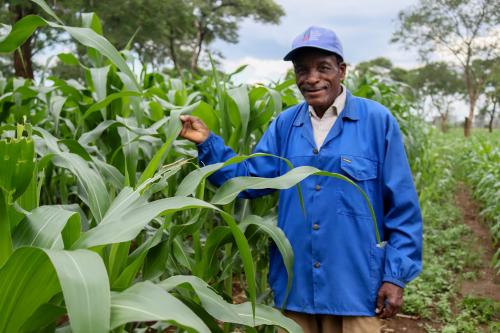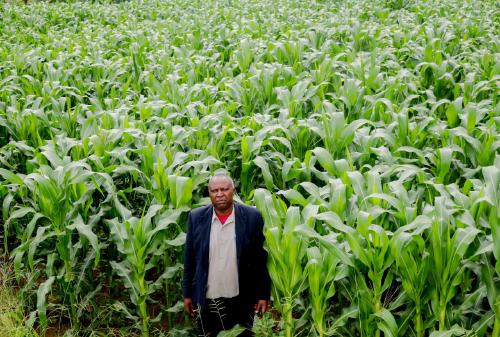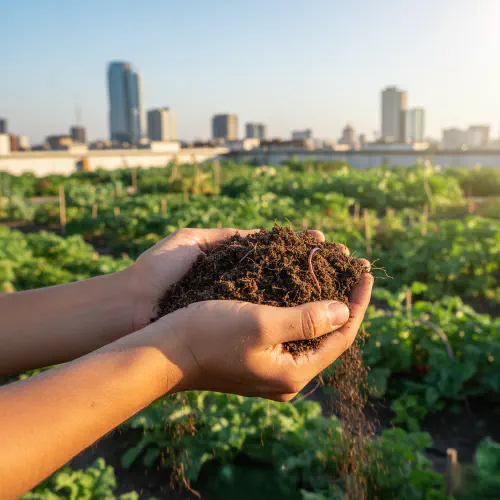Maize is a staple food for over half of the Zambian population and is cultivated by around eighty percent of smallholder farmers in the country. However, despite this, maize yield per hectare has often been significantly low, with farmers only averaging around 1.5 tonnes per hectare. Contributing factors to this low yield include drought brought about by climate change, pests and diseases, nutrient-deficient soils, and suboptimal agronomic practices. During our pilot programmes in the 2023/2024 season, iSDA partnered with IAPRI (Indaba Agricultural Policy Research Institute) to deliver tailored fertiliser recommendations to farmers in Zambia with an objective to increase maize yield by half and raise awareness of soil fertility levels across smallholder farms in the districts of Monze and Kapiri Mposhi.
Working with Farmer Training Centres and field agents, we used Virtual Agronomist, our tailored advisory service connected to our iSDAsoil map, to collect information from district farmers on their agricultural management and history, and determine site-specific soil properties. This data was then used to generate fertiliser recommendations and agronomic advisories which were then adopted by the farmers. During our visit with IAPRI to the district sites at the vegetative growth stage in March 2024, remarkable differences were revealed between maize crop fields that used the Virtual Agronomist technology, and the fields that continued with farmers’ initial practices.
“Even though the crop is still at vegetative stage, I can see differences between the field in which I used my normal practices and the one where I implemented the recommendations from Virtual Agronomist and I expect double the yields from the Virtual Agronomist field. Poor management in the past made me think that my soil acidity was high and that the crop was not responding well. I therefore informed IAPRI and iSDA officials that I was happy that pH values from Virtual Agronomist were within a normal range otherwise I would have wasted my resources on liming the soil.” - Mr Christopher Chamoto, Maize Farmer, Kapiri Mposhi, Zambia

Farmer Christopher Chamoto in his maize field in Kapiri Mposhi where he implemented Virtual Agronomist

Paul Chunga, iSDA field agronomist in Mr Christopher Chamoto’s field demonstrating the difference in growth between two plots: one where Virtual Agronomist was implemented and the other where Mr Chamoto used his own practices
Positive effects of Virtual Agronomist were also seen in Monze in the instance of maize farmer Mr Victor Nchimunya. He found that by implementing Virtual Agronomist recommendations, he could apply just six bags of Compound D fertiliser and two bags of Urea, instead of his previous application of eight bags of Compound D fertiliser and four bags of Urea. This resulted in him saving significantly on costs by not over-applying fertiliser.

Mr Victor Nchimunya in his maize field when the crop was at vegetative growth
For smallholder farmers, Virtual Agronomist has established the importance of site-specific fertilisers and has demonstrated to them the constraints of using blanket recommendations in their previous practices, resulting in poorer yields. In addition to helping farmers, Virtual Agronomist has helped to raise awareness of soil fertility and the importance of good agronomic practices among government agricultural workers, non-governmental organisations and all other value chain actors across the agricultural market. Recognising the promising results of Virtual Agronomist in the Kapiri Mposhi district, Mr Chiluba Wabalika, the district agricultural officer, prompted the government to demand a capacity building exercise for all extension officers by providing training in Virtual Agronomist for the 2024 season.
Despite the promising crop stand of maize at the vegetative growth stage, Zambia was affected by a prolonged and unprecedented drought, and our pilot districts of Monze and Kapiri Mposhi were among those that were declared a natural disaster by the government. The drought had a negative impact on the physiological growth of maize crops meaning that the initial improvements observed at the vegetative growth stage may not translate to the final yields for 60% of the farmers. However, the plots that received a small amount of rain, despite the drought, after top dressing, and when short duration seed varieties were used, are expected to harvest some considerable yield.
Using Virtual Agronomist, farmers can increase crop drought resistance for future seasons. Applying balanced fertiliser recommendations and building up soil fertility over time promotes deeper root growth, allowing crops to better withstand periods of drought. Good agronomic practices, such as timely planting and good weed management, also help to mitigate drought. Using the recommendations given by Virtual Agronomist helps farmers to achieve these best practices.
In spite of external uncontrollable factors affecting crop growth and yield in Zambia, the overall response to Virtual Agronomist in the pilot districts is a positive one, where farmers, government agricultural workers and other value chain actors have a better awareness of soil fertility levels and are able to witness the benefits of improved agronomic management. In response to the feedback from Virtual Agronomist, we are excited to announce our continued services to Zambian farmers through a new version of Virtual Agronomist using AI (artificial intelligence) known as co-pilot. The co-pilot version is currently being deployed in Uganda and Kenya and builds in a variety of additional tools to aid farmers in improving their agronomic management even further.



